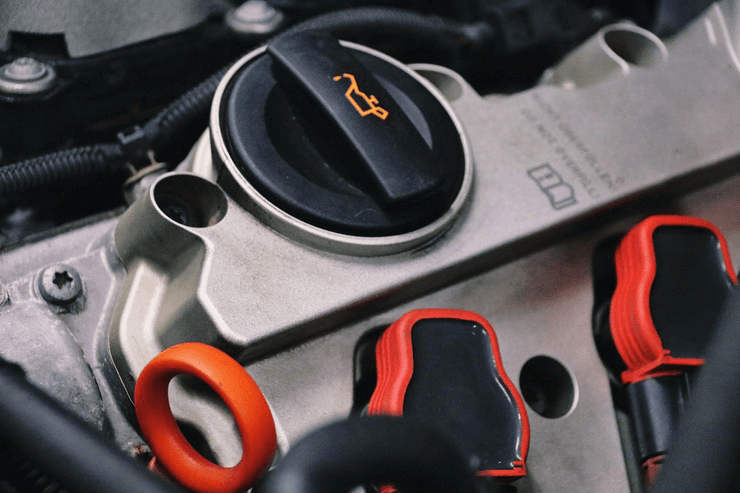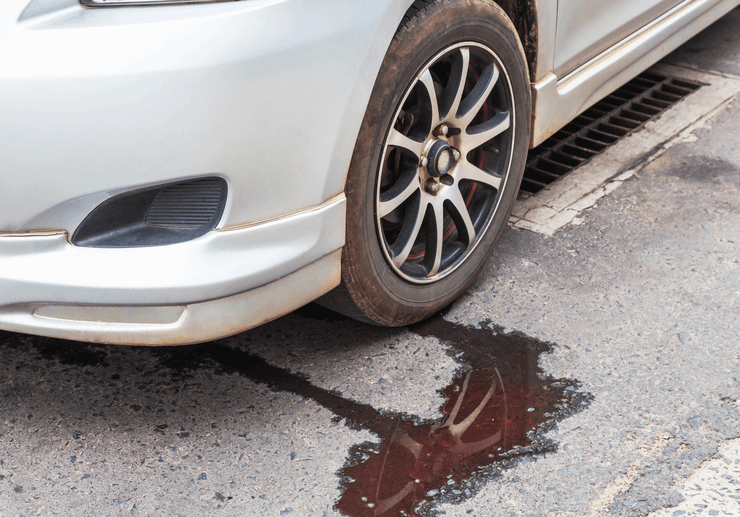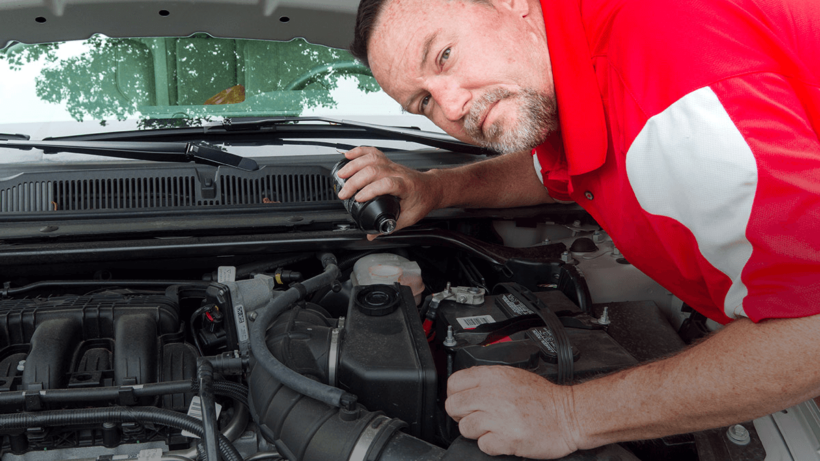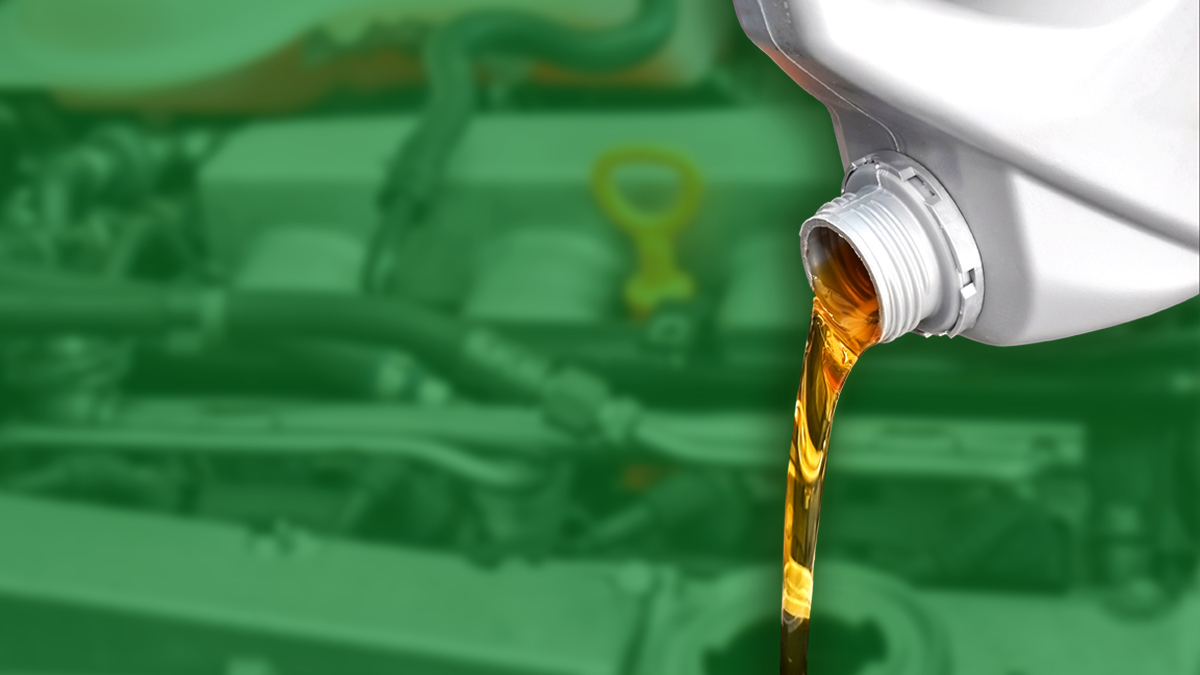Checking your car’s fluids and their proper maintenance, including regular replacement and possible leak localization, is a must for optimal performance and the lifetime of your vehicle. Identifying the various fluids in your automobile and spotting typical leaks, on the other hand, can be a difficult undertaking for vehicle owners. Understanding the various types of car fluids and detecting potential leaks early on will save you money on repairs and breakdowns.
If you were wondering, “Why is my car leaking fluid?”, this article will help you sort everything out. To keep our community educated, we at ClearVin have decided to walk you through the process of identifying your vehicle’s fluids and common leaks, as well as discuss how to localize them promptly. By becoming acquainted with these important points of car maintenance, you can take actions to keep your vehicle in decent technical condition and avoid potential road risks.
Different Types of Car Fluids

Prior to discussing the leakage of car technical fluids, it’s essential to familiarize yourself with their kinds and purposes. These fluids differ in color and consistency. Engine oil, for example, is normally dark brown or black in color and feels slick to the touch, whereas coolant is frequently green, pink, or orange and has a pleasant smell. Familiarizing yourself with the appearance and properties of these fluids can assist you in distinguishing them.
The following is a review of the key car fluids:
Engine oil is definitely the most well-known fluid in a vehicle. It lubricates the motor’s moving parts during their rotation, reduces friction, and removes heat generated during operation. It is crucial to check the fluid level regularly and change engine oil as recommended by the manufacturer.
Coolant, commonly known as antifreeze, keeps the engine of a vehicle from overheating. It takes extensive heat from the motor and disperses it with the help of the radiator. It allows for maintaining the needed engine temperature within a safe range. Checking the coolant level on a regular basis and filling the fluid up when necessary will help prevent engine damage and overheating.
Transmission fluid ensures smooth gear shifting and cools the transmission system. Different vehicles use different types of transmission fluid, so determining the correct type and maintaining the appropriate level is a must for smooth vehicle operation.
Brake fluid, as a key component of safe driving, is responsible for facilitating the braking process. It transfers the pressure from the brake pedal to the brake pads, allowing the car to slow down or stop. The important point to remember is that brake fluid absorbs moisture over time. Therefore, you should replace it periodically to maintain its effectiveness, prevent damage to the braking system, and ensure safe driving on the road.
Power steering fluid makes turning the steering wheel easier. It adds to the driver’s control of the vehicle by providing hydraulic assistance. Car owners should check the power steering fluid level on a regular basis and refill it as stated by the manufacturer.
By properly maintaining the car’s technical fluids, you can avoid significant technical issues and ensure safe driving.
Run a Quick Visual Inspection for Any Car Leaks

Once you’ve sorted everything out concerning the appearance, locations, and functions of the car’s technical fluids, the next step is to inspect your vehicle for leaks on a regular basis. Specialists recommend running a quick auto check every time before you hit the road. If you are driving, first allow your car to cool down by parking it on a level surface. After that, inspect the ground beneath the automobile for any technical fluid stains or puddles.
Identify the Fluid Color and the Car Leak Location
If you find a car leaking brown fluid or having black drips under the motor, it frequently indicates an engine oil leak. At the same time, a car leaking green fluid from the front or yellowish stains there may indicate a coolant drip. If you have ever wondered why your car is leaking red fluid or if you have noticed your car leaking brown fluid from the front of the vehicle, these may also be signs that transmission fluid is spilling. That’s why identifying the technical fluid color and location of the leak is a necessary first step in solving the issue. These details will provide you with useful information for quickly diagnosing the problem.
Do Not Forget About Dipsticks and Car Liquid Tanks
Checking the special dipsticks and your car fluid reservoirs is another important way to identify a fluid leak in your vehicle. These are located in various areas of the engine bay. You can easily find them by looking for special labels and marks with the appropriate fluid name. Checking these dipsticks and car fluid tanks on a regular basis will allow you to monitor fluid levels and detect any unexpected drops or strange looks in the fluids. For example, if you filled up the engine oil a few days ago and now the dipstick shows that it has significantly reduced, it may be a sign of engine oil leakage.
Pay Attention to How a Vehicle Is Running
Monitoring your automobile’s performance, in addition to visible clues, can aid in the detection of car fluid leaks. For example, pay special attention to your car’s technical condition if you notice the engine is overheating, the steering has become more difficult, gear switching is often slipping, or there is a burning smell. These are all indicators of fluid leakage. They may also mean a low level of a car’s technical fluid or that it is contaminated. In any case, the solution here is to investigate the fluids for potential leaks.
Reach For Help
If you are unsure about identifying your car’s fluids or regular leaks, run through your car’s manual or get professional assistance at a repair shop. As a rule, automakers provide detailed basic vehicle maintenance instructions and guidelines. They include how to properly check and maintain car fluids. Any motorist can make use of these instructions.
In addition, a reliable mechanic can also assist in identifying problems and providing maintenance advice based on their experience. That is how you can find more information about car fluid leaks.
How to Solve Common Car Fluid Leak Problems

The key question is how to solve the issue after identifying a fluid leakage. We at ClearVin have some recommendations that would help you repair the vehicle.
Handling Engine Oil Leaks
The first point to examine when facing a car’s engine oil leak is whether the motor’s elements are properly sealed and in their places. Check for loose oil pan bolts, a loose oil filter, or a loose oil drain plug. If any of these components are not properly secured, tighten them.
Sometimes it is also necessary to replace gaskets and seals if they are worn out. The engine oil leak might be caused by the PCV (Positive Crankcase Ventilation) system malfunctioning. Ensure the oil filter is properly seated and tightened. If the oil filter’s rubber gasket is old or damaged, it may not create a proper seal. Similarly, inspect the oil drain plug and its washer. If the washer is worn or damaged, it may not seal effectively.
Managing Transmission Fluid Leaks
If you find a car leaking red fluid, this could indicate a transmission fluid drip. Another sign of the issue is a burning smell when you get out of your vehicle after a drive. The gearbox fluid leaks can be repaired in a variety of ways, ranging from simple solutions such as tightening loose bolts or replacing broken gaskets to more significant repairs to the transmission itself. If you are not confident in performing these operations, seek the assistance of an experienced technician.
Addressing Car Coolant Leaks
If we speak about a coolant leak, it can be indicated by a rising engine temperature or antifreeze warning lights on your dashboard. When the car’s motor is cold, check the coolant level. If it is less than the minimum, you may have a leak.
Another major source of car coolant leaks is the radiator. Examine it visually for evidence of drips or cracks. To avoid burns, be cautious when examining the radiator when the engine is hot. It is preferable to solve a coolant leak as soon as possible. You may have to fix or substitute a damaged hose, radiator, or other used car cooling system components. It all depends on the location and degree of the leak. If you are unsure about performing the job yourself, don’t be afraid to get help from a reputable mechanic.
Troubleshooting Brake Fluid Issues
A puddle of brownish-red liquid beneath your vehicle could indicate a brake fluid drip. Because brake line and component leaks can occur anywhere in the system, it is critical to properly inspect each item. Examine the brake lines, calipers, and wheel cylinders for wet patches or drips.
Also, remember that air can become trapped in the brake system at times, resulting in a spongy or ineffective brake pedal sensation. If you find any brake fluid leaks, you should have them repaired as soon as possible to ensure your brakes are working correctly.
Resolving Power Steering Fluid Leaks
Leaks of power steering fluid can occur at a variety of locations, including the power steering pump, hoses, and the steering rack itself. Examine these areas for visible drip signs, such as damp spots or flowing liquids. The leak caused by a loose or damaged hose only needs to be tightened or replaced. If the problem is with the power steering pump or steering rack, however, it is best to leave it to professionals for repairs or replacements.
The Bottom Line
Identifying the technical fluids of a vehicle and their typical leaks is a must for all auto owners. It allows for correct maintenance and helps you avoid potential issues with a vehicle. By visually checking for car fluid leaks on a regular basis, monitoring vehicle performance, and obtaining expert guidance when necessary, you can keep your automobile operating smoothly and save money on costly repairs in the long term.
To get all the key details about your used vehicle or a pre-owned car you consider buying, use our VIN decoder or reveal the automobile’s background by running a license plate lookup for free. We have a lot of great solutions to offer. Along with that, we are always happy to lend a hand. Contact us online to get more details about the vehicle background examination. You can also call us at: +1 (844) 268-5991 (8:00 AM – 3:00 PM EST, Monday to Friday).









